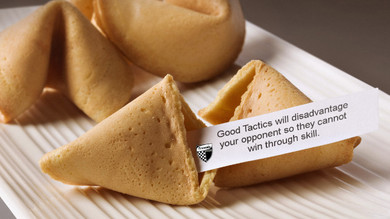It’s more complex than just Mindset, Tactics, Skills, and Gear
I want to look at the hierarchy in the perspective of classes since that’s what we do here. Teaching MTSG has some unique challenges and is more than just placing values on them in an order of hierarchy.
Mindset
Mindset cannot be taught in a class setting. I’ve sat through multiple seminars from multiple schools that are focused on mindset. The most that these offer is a window into the topic. Opening the door and going through it are done outside of a class setting. Most likely, it is the single longest subject to learn in the hierarchy. Most people that you, the dear reader, look up to for their individual mindset have cultivated that over decades of life experiences. Saying the words “harm my children and mama bear will come out” has zero effect on the truth of the matter. One could argue, that if you have to say those words, it’s a lie. Mama Bear isn’t a teddy bear until her cubs are in danger. She’s a fucking bear! Do you know why people don’t “poke the bear” when the cubs aren’t around? Because she’s still a fucking bear. 24/7, she lives the life of a bear.
Classes can offer an opportunity to expose some students to aspects of mindset that are new to them. In fact, they are often a great place to discover gross deficiencies in one’s mindset. But they won’t teach you new ones; there simply isn’t time or resources to do so.
I’m gonna jump to the bottom of the hierarchy next so we can then move along to the meat of the subject.
Gear.
Gear classes are generally armorers courses and the like. I’ve had people tell me that Night Vision classes are partially Gear, but they aren’t. Unless the class involves fixing them, it is still a skills class. The skills are operating the tubes or the lasers, which is no different than gun classes teaching the skills to operate the pistol or the rifle. Now that we have those two out of the way, let’s get into the part that plagues the training industry.
Skills and Tactics.
One of these is immensely important, and one of these is the focus of most schools. Sadly, they aren’t the same one.
Ideally, the student will be a master of both, but that isn’t the reality. For a host of reasons, most students won’t even attempt to excel in both of them. Unfortunately, most students (and instructors) will eschew good tactics in favor of honing skills. Something that centuries of documented conflict have shown to rarely, if ever, matter.

We Americans like to puff out our chest and talk about how our military is the most awesome thing ever. Yet, by far and large, our military performs terribly at the skills associated with running a gun. I chuckled at the recent memes shared on the interwebs about the US shooting performance at the Olympics and how poorly we did. Yet, for all the badassery we are historically known for comes directly from good tactics and not from any particular level of skill. Sometimes, a certain level of skill opens up new options in tactics. However, the skill itself rarely has much effect on conflicts.
The ability to strike an opponent from a distance that he cannot strike you from is completely worthless if you don’t put yourself at a distance from which he can’t strike you. So why do we see an ocean of classes that teach long-range marksmanship and hardly any that teach the tactics of putting a shooter in a position to utilize that skill?
Before you answer that question, take a look in the mirror. It is possible that the school or instructor is to blame in isolated cases. However, the reality is that student demand is likely responsible. There’s a lot of hard work in training tactics. It requires greater logistics, not only for the learning but also for the pressure testing. It is a lot easier to find a spot a few yards deep and a few feet wide to work on the skills of running a gun. A single piece of paper and a timer are often all that is utilized to test progress. A whole separate article is floating around here about that stool missing one of its legs. (hint: its Accuracy, Time, and Movement.)

Learning tactics will require enough space and terrain to allow for movement and cover, concealment, and barricades. Then, to test, there is likely going to need to be all of that plus the gear associated with utilizing force on force against a resisting opponent to see if those tactics actually work as intended. How do you, the student, fill those requirements? With lots of time, and/or money, and/or logistical support in the form of manpower, facility, gear etc. It’s much easier to go to the local club and work on skills.
Like most things that are easy, it doesn’t pay the same dividends as the stuff that is hard. I don’t care how accurately you shoot or how quickly you can draw, shoot, or reload. There are simple tactics that negate all of those. These tactics are available. You, the consumer, can find places to consume them. But you may have to look around more. You may need to travel further, and you may have to pay higher tuition. But that’s because the culture of ignoring tactics to focus on skill has left a landscape where it is easier to find skill-based learning opportunities. If you all create a demand, someone will find a way to supply it. The ugliness is that those who want to truly progress in the art are left with less opportunities to learn something immensely more productive that can still be taught in a class format.
The MTSG hierarchy is probably more complex than a simple list. In all 4, better than your opponent is always better. But there is context. Prisoners, by far and large, have a better survivalmindset than prison guards, yet we don’t often hear about riots completely flip-flopping the status quo in prison. Even though the prisoners usually outshine the guards in the skills department, too. When we evaluate ourselves and/or opponents, there are some things that we falsely rank. The aforementioned mindset fallacy is one. But if we are looking at classes to take, we need to evaluate those with an assumption that the mindset of our opponent is on par with ours.
When we talk about gear, the random gun guy thinks the difference in magazine capacity or caliber will be a determining factor. But we have to falsely assume that just about everything else is identical.
That. Just. Doesn’t. Happen.
When we talk about Skills, that’s where the normal student will strut around with their chest puffed out, showing their bill drill target or their el prez time. Somewhere deep inside, what they are secretly hoping is that their imaginary opponent is as clueless as they are about tactics and will also be inept. But we are back to the common problem that students have: imagining their fantasy gunfight. The problem is that the bad guy also gets to imagine his, and almost exclusively, the bad guy has the initiative at the start of the actual fight.

Before you comment that “you said less skill is better than more skill” or “ you said skills don’t matter,” I’ll clarify it for you. Good Tactics can negate any skill discrepancy. I never would even suggest that you take skills OR tactics classes. You can take both. But if you have to choose, for whatever reason, between the two, Tactics trump skills. It’s been proven time and time again. In the pressure testing of FoF, as well as throughout history’s conflicts, tactics will win the day.
The hierarchy certainly is listed in the correct order. You can be a Delta Team 66 Operator, and if you don’t carry a gun because “that can’t happen to me!” or “How could this happen so close to Arbor Day?!” Then, your lack of mindset will likely be your demise.
If you are an IPSC Grand Wizard standing in the open, with your imaginary foot fault lines, facing multiple bad guys, but think that your split times and target transitions will save the day, your lack of tactics will explain your end.
But if you are a 14-year-old kid, raised in a violent barrio with a Phillips head screwdriver in hand; you could easily end up lifting a chrome plated 1911 out of a tooled leather holster that had previously been covered with a 5.11 vest, off of your recently expired, easy mark. Shit gear, shit skills, a conquering mindset, and solid tactics will give that kid a 100% win ratio. He doesn’t even know what his draw time or his best group is.






One Response